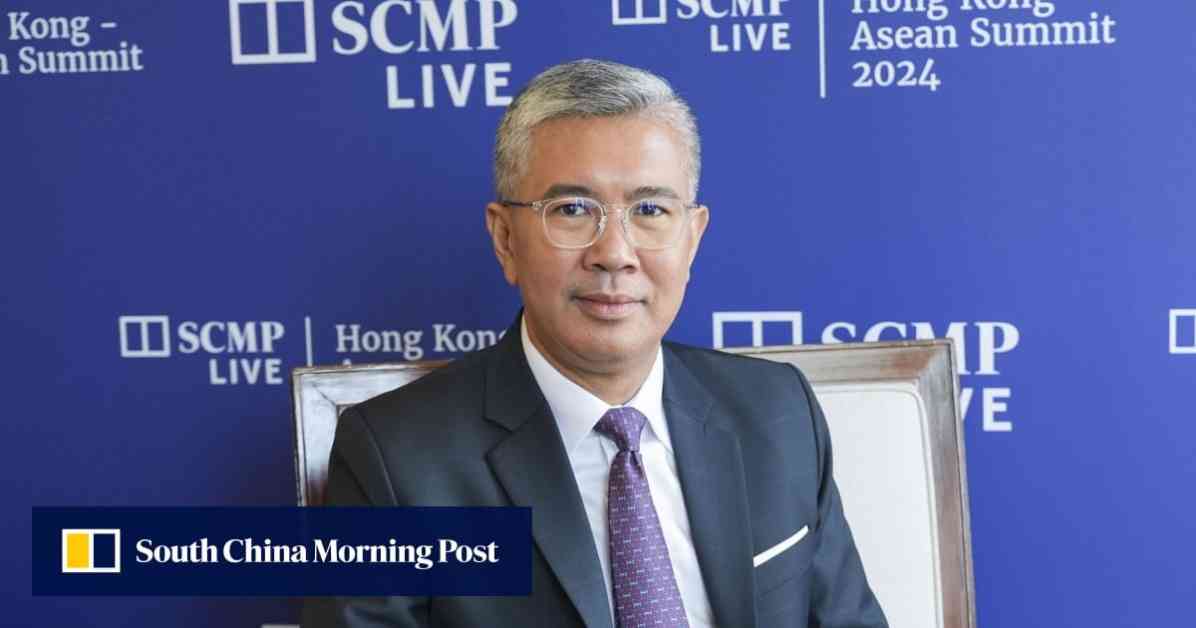Challenges Facing Asean in Trade
The Asean group of nations is facing significant challenges in the current geopolitical landscape, as highlighted by Malaysia’s Trade Minister’s call for unity. In a speech at the Hong Kong-Asean Summit 2024, Investment, Trade and Industry Minister Tengku Zafrul Aziz emphasized the importance of fostering internal cooperation and deepening the bloc’s commitment to centrality in order to succeed in these challenging times. With the escalating rivalry between the US and China, global companies, particularly in the tech sector, are looking to diversify their supply chains to reduce geopolitical risks.
Zafrul acknowledged that promoting Asean centrality in trade will not be an easy task politically. He noted that while in the long run, all Asean nations will benefit, some may gain more than others. However, he emphasized that unity is crucial for Asean’s aggregate good, rather than each nation competing on its own and potentially losing out alone. This call for unity reflects the Minister’s recognition of the need for Asean to present a united front in the face of increasing global challenges.
Benefits of Asean Centrality in Trade
The concept of Asean centrality in trade holds numerous benefits for member nations. By working together to deepen economic integration and cooperation, Asean can enhance its collective bargaining power on the global stage. This can lead to increased market access, improved competitiveness, and greater resilience against external shocks. Additionally, promoting Asean centrality can help attract foreign investment and foster innovation and technology transfer within the region.
Furthermore, Asean centrality in trade can serve as a platform for member nations to address common challenges and pursue shared goals. By aligning their trade policies and regulations, Asean countries can create a more conducive business environment for both domestic and foreign investors. This can help drive economic growth and development across the region, lifting standards of living and promoting sustainable development.
Strategies to Enhance Asean Centrality in Trade
In order to promote Asean centrality in trade, member nations must adopt proactive strategies that prioritize unity and cooperation. One key strategy is to strengthen the existing institutional framework of Asean, such as the Asean Economic Community (AEC), to facilitate closer economic integration and enhance policy coordination. This can help streamline trade procedures, harmonize regulations, and reduce barriers to cross-border trade and investment.
Additionally, Asean member nations should prioritize the development of infrastructure and connectivity within the region to facilitate trade and investment flows. By investing in transportation networks, digital infrastructure, and energy grids, Asean can improve the efficiency and competitiveness of its economies. This will not only benefit member nations individually but also strengthen Asean’s position as a key player in the global economy.
Moreover, Asean must prioritize capacity-building and skills development to ensure that its workforce remains competitive and adaptable to changing market dynamics. By investing in education, training, and research and development, Asean can foster innovation and entrepreneurship, driving economic growth and technological advancement within the region.
Conclusion
In conclusion, Malaysia’s Trade Minister’s call for unity to promote Asean centrality in trade underscores the importance of cooperation and collaboration among member nations. By working together to deepen economic integration, enhance policy coordination, and invest in infrastructure and human capital, Asean can strengthen its position as a key player in the global economy. In these challenging geopolitical times, unity and solidarity are crucial for Asean to navigate the complexities of the international trade landscape and secure a prosperous future for its citizens.



















